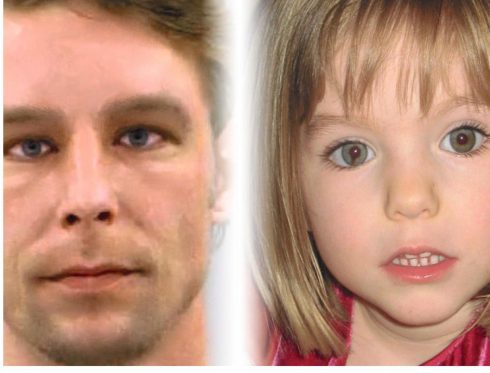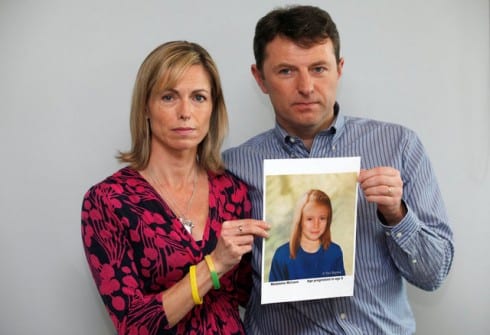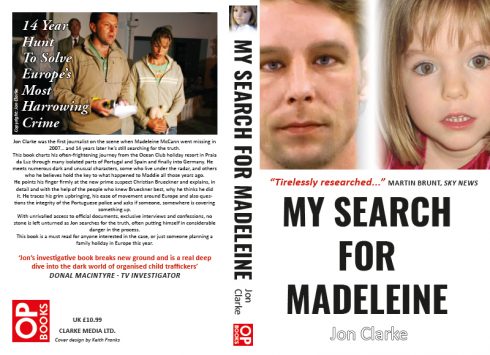I FIRST investigated the Madeleine McCann case on Day One in May 2007, when I was up and out of my house near Ronda before 7am and on the road to the Algarve.
A missing child story in Portugal wasn’t too out of the ordinary.
What was different though, was the family involved. The professional, middle-class doctors Kate and Gerry McCann were not your typical Brits abroad-type victims – the least likely of tourists to want to get involved with the press, particularly on holiday.
But they were clearly in desperate need for help.
Conjuring up a legion of journalists to help in their hunt for their missing daughter seemed the best way forward.
I was working for a handful of national British newspapers and ended up spending almost two weeks there in the first month alone.
The story had first appeared on Sky News at around 7.45am in the UK,and I figured it would be over by the time I got there: she would be found, like the vast majority of other kids that wander off during their holidays, either dead or alive, in a swimming pool or a ditch somewhere.
It wasn’t hard to locate the Ocean Club, in Praia da Luz and I was the first British newspaper journalist on the scene.

After establishing the name of the missing toddler as ‘Maddie’, I walked up the short flight of stairs to the apartment, number 5A, – completely unimpeded by police – to speak to the parents, as any decent journalist is programmed to do on arrival at a job like this.
I walked inside the open front door and bumped straight into the McCanns, who were heading off to the police station in nearby Lagos to make an official missing persons statement.
They looked fraught and stressed, but were somehow still functioning, despite presumably not sleeping a wink. I smiled and said ‘hello’, introducing myself as a local hack, just arrived from Malaga.
I promised I’d help as best I could to find their daughter.

They seemed grateful and smiled … well grimaced to be fair – saying ‘thank you’ and mumbling a few other pleasantries, before telling me their daughter’s name and the rough time she had disappeared.
I don’t remember much but I do remember them describing it as ‘a nightmare’ and saying they were ‘sure’ she had been snatched. I scribbled it down in my notepad.
From the very first moment I arrived in Praia da Luz that May morning, my overbearing drive was to solve the mystery and find young Maddie.
The rules of journalism revolve around the five ws: When, Where, Why, Who and hoW. Stick to these and you can’t go wrong.
I haven’t yet solved the mystery, but my 130,000 word, 46-chapter book My Search for Madeleine comes close, I believe, to offering any amateur detective or interested reader the opportunity of understanding the case and all its many complex and compelling idiosyncrasies.
Searching the Border – and dozens of links to Spain
While the Portuguese police turned their focus on the McCanns, I started looking into numerous leads in Spain.
Long-time based in Praia da Luz sex offender and paedophile Christian Brueckner – now the current prime suspect – had at no time been on the local detectives radar.
I am anything but convinced of their claims that they tried hard to locate him, despite the PJ detectives claims they visited his home.
By the end of 2016, police had to sift through over 8,600 reported sightings of Maddie in over 100 countries.
Between 2007 and 2013, my newspaper The Olive Press looked at more than a dozen links to the case around Spain.
The McCanns have always believed there is a ‘very real possibility’ Maddie was taken across the border.

This is, after all, one long straight coastline that simply continues into Spain. There are no great mountainous boundaries and it has been a mostly fluid border, hardly manned since the 1980s.
There are numerous crossing points between Portugal and Spain stretching from the southern tip at Vila Real de Santo Antonio to the northern Atlantic border at Seixas, near Galicia.
Known as The Stripe (A Raia in Portuguese, La Raia in Spanish), it is, at 1,214km in length, the longest uninterrupted border in the European Union.
Border checks are rare, and, apart from the recent ones due to Covid, when the border was actually shut for a number of months, it was only manned during the 2004 UEFA Euros, the 2010 NATO summit in Lisbon and Pope Francis’ visit to Fatima in 2017.
Over the years we have investigated leads that include a known Swiss peadophile living in Benimantell who killed himself after snatching and killing a toddler remarkably similar in appearance to Madeleine in July 2007.
The 67 year old – who murdered Ylenia Lenhard, 5 – lived for two decades in Benimantell, near Benidorm.
We also probed a gypsy kidnap gang, allegedly based out of Sevilla, that had tentacles across the border on the Algarve.
Then there was a convicted British sex offender who wrote a letter from his death bed claiming he knew Maddie had been snatched to order for sale to a wealthy childless couple.
British expat Raymond Hewlett – who lived for many years in Andalucia – allegedly told his son about her fate by letter as he lay dying of throat cancer in hospital in Germany in 2010.
The paedophile was much more likely to have been involved himself: Hewlett, who was convicted of the rape of a 12-year-old girl after knocking her out using a rag soaked in paint thinner was known to be in the Praia da Luz area around the time of her disappearance and spent many years living between three Algarve towns, as well as in Cadiz, and Malaga’s Costa del Sol.
And most sinister of all was a nightclub bouncer turned whistleblower who had compiled a dossier on a massive paedophile network linked to the Casa Pia orphanage in Portugal and well connected to the Portuguese judiciary and police.

Marcelino Jorge Italiano had worked as a security guard on the Algarve for years and was running for his life, he told me, having fled to Spain after attempting to blow the whistle on one of the most powerful paedophile networks there.
He told me he had uncovered a huge dossier of information on the big paedophile network and that not only had he reported it to the Spanish National Police but he also had a lawyer, who was representing him in Spain.
The 6ft 4in giant of a man, who played semi-professional basketball for the local Huelva team – was engaging and organised.
He spared no details as he laid out the information he had picked up and the things he had seen while working as a doorman and bouncer on the Algarve.
He told me the gang was based around a Faro nightclub owner and two other businessmen who had high-level legal connections in London.
Most alarming of all, he claimed the gang might have snatched as many as a dozen children around Portugal – a good number via Angola – and they were still functioning to that day.
‘They prey on the weak and vulnerable,’ he said. ‘They are ruthless.’
When I called the McCanns’ spokesman Clarence Mitchell in London, I wasn’t really sure what to expect, but he was remarkably receptive to the information.
He said he had already heard of one of the ringleaders, as well as various potential links to the Casa Pia case. ‘We are taking this seriously and see it as extremely credible. Gerry and Kate are grateful for the information and hope it leads somewhere.’
In the summer of 2012 we had at least 10 different readers come forward to say they believed they had seen Maddie.

Then expat Rose Johnson was convinced she had seen Maddie at an isolated beach restaurant, Merendero (picture above), near Torrox, east of Malaga. The former cleaner, who had lived in Spain for a decade, said the blonde, blue-eyed girl, then around eight, was acting strangely and was clearly distant from the dark-haired family she was sitting with.
The following year, another British expat said he was sure he had seen Maddie the same summer in nearby Nerja.
And it should be pointed out that both areas have a good proportion of new age travellers and both areas border on the Alpujarras region of Granada, where current prime suspect Christian Brueckner, as I reveal in my book, spent a considerable amount of time.

My Search for Madeleine, by Jon Clarke, can be bought on all Amazon platforms in both digital and print formats.
READ MORE:
